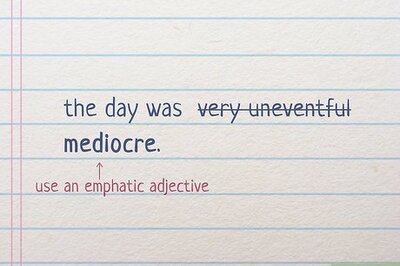
views
A nostalgic Apple Macintosh advertisement from 1996 has recently resurfaced online, evoking memories of floppy disks and CRT monitors. The ad, featuring Bollywood actor Sameer Soni, has gone viral, with viewers sharing amused reactions on social media.
Posted on Instagram by Page TV1 India, the ad starts with a high-ranking official arriving at a corporate office, asking Soni—portraying an employee—for a PC to use his Windows disk. Despite initial reluctance, Soni uses the Apple Macintosh to demonstrate its compatibility with Windows software. The ad concludes with the iconic rainbow Apple logo and the tagline: “Does more, costs less, it’s that simple.” The caption accompanying the video reads, “Throwback: First Indian Ad for Apple Macintosh-1996.”
Watch the viral video here:
View this post on Instagram
This forgotten gem from the ‘90s surely brought back memories of a time when tech innovations were just beginning to reshape the office environment. It has accumulated more than 1.5 million views since being posted online four days ago. The comment section is buzzing with a variety of reactions from social media users.
One user quipped, “Kids from today thinking why the guy is carrying a save icon in his pocket?”
Another remarked, “Looking at this ad makes me realise technology has really come a long way.”
Someone else wrote, “Time when apple use to focus on innovation not on money.”
Others noted with comments like “Back when Apple was more flexible to work with and not an isolated OS and “Damn the life was so sorted out at that golden time.”
Many even compared Soni sitcom characters, with one user calling him, “Desi Chandler!!!” and another saying, “Sameer Soni looks more like Jim (John Krasinski) than Jim from The Office.”
The Macintosh, now known as the Mac, was a ground-breaking innovation as the first widely available personal computer featuring a graphical user interface (GUI) and a mouse. Launched by Apple Computer Inc. — now Apple Inc. – during Super Bowl XVIII on January 22, 1984. The Macintosh aimed to offer an intuitive and accessible computing experience. Its design revolutionised how users interacted with computers by introducing a mouse, and icons for various functions and actions like the point-and-click and click-and-drag actions.




















Comments
0 comment